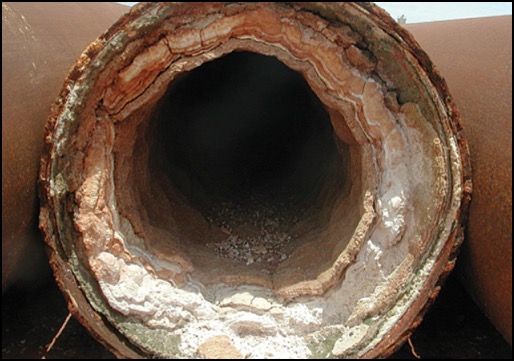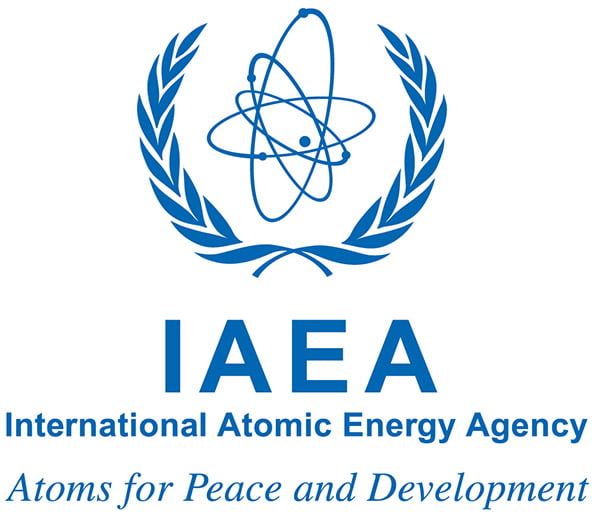NORM are unstable atoms which emit alpha & beta particles with gamma radiation energy. This process called “Decay Process” continues till the stability point is achieved. The time it takes is measured as “half-life time”. Ra-226/228 have half life is 1600/5.8 years. After this much of time, their atoms will have a 50% less mass. Waste material contaminated with enhanced levels of NORM requires to be disposed off in a controlled manner to ensure it does not provide an unacceptable risk to the environment and the general public. NORM can cause health problems in large exposure situations.
Types of norm waste




Several types of NORM wastes are produced during Oil&Gas operation:
1) Tubulars with scale
2) Sludge
3) Metallic equipment with scale or sludge 4) Burnable Miscellaneous
5) Non Burnable Miscellaneous
Descaling unit
The purpose of the descaling unit is the elimination of the scale adhered to the tubulars and metallic equipment used during Oil&Gas operations. For tubulars decontamination, the scale is eliminated by means of high pressure water (up to 1400 bar) that removes the adhered scale. The system is fully automated, only requiring operator supervision.
In case of contaminated metallic equipment, a manual cleaning cabinet is installed in order to perform the decontamination operation manually by means of a “high pressure water gun”. A hoist is installed inside the cabinet in order to make easier the metallic equipment handling.





Waste water treatment plant

The out coming water of Descaling unit is treated in the Waste Water Treatment Plant (WWT). The plant includes physical and chemical processes that guarantee the appropriate water quality for Descaling operation.
Centrifuge
One of the most common operations for treating sludge is centrifugation.
By means of densities differences of the sludge components (water, oil and solids), the centrifuge is capable of splitting the sludge into two or three phases depending on the selected device.

The solid phase, that contains most of the radiation, is transferred to storage silos in order to be incinerated or solidified with concrete. The liquid phase can be treated in an oil separator for separating the oily phase from the water phase in case a two phase centrifuge is selected.

Incinerator
Incineration is installed when waste volume reduction and organic compounds elimination are required. Incineration units typical includes one or two combustion chambers, flue gas treatment and ash recovery systems. The wastes (burnable miscellaneous, dewatered scale, sludge) are fed into the combustion chamber by means of screw conveyors, pipe connection or double gate systems.
Rotary kilns are installed as primary combustion chambers due to its high performance when handling solid wastes.
The flue gas that leaves the combustion chamber is treated in order to reduce the temperature and eliminate the remaining ashes and contaminating particles.
The flue gas treatment usually includes flue gas coolers, bag filters, reactors, heat exchangers and exhaust fans.
The ashes produced in the combustion chamber are collected, cooled, and solidified with concrete.


Solidification
The final stage of the waste treatment process is the stabilization and solidification unit.
The non burnable miscellaneous and ashes are mixed with concrete and transferred into 55 gal drums. During the mixing of ash and concrete, some additives are added to chemically stabilize the product. Also a cooling system is include in the mixing chamber since the stabilization reaction is exothermic.
This operation is fully automated in order to avoid operator exposure to the high activity radiation produced by the waste ashes


Drums are stored for 7 days guaranteeing an appropriate curing time.
Then the drums are characterized in order to obtain the activity of each of them. Characterization is critical for the next treatment stage, the storage in HHISO containers. In order to avoid “hot spots” in the disposal landfill, the HHISO must be filled with drums considering the activity of each drum.
The operation of introducing the drums into the HHISO is performed remotely by means of a vertical drum handler. Once the HHISO is full of drums (typically 12 drums are stored in each HHISO container), it is filled with concrete and covered with a steel lid.
After curing time, the HHISO containers are stored in the landfill.
People Who Trust Us




















